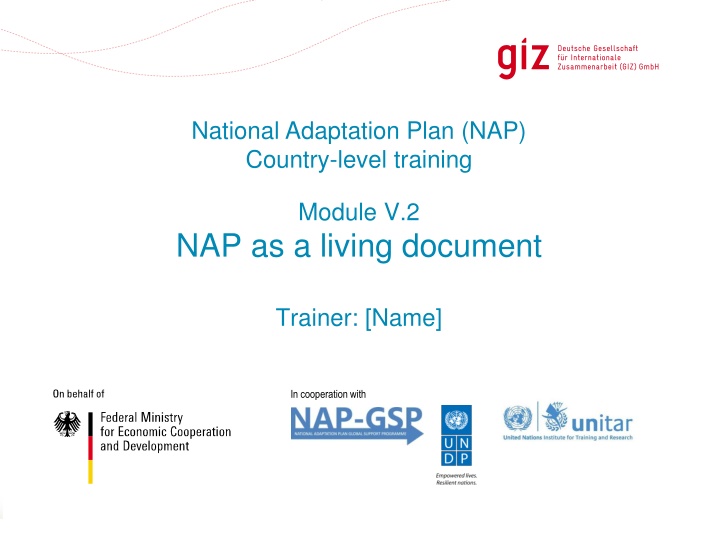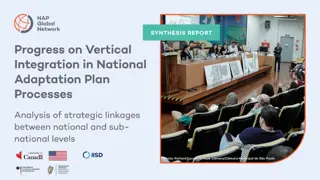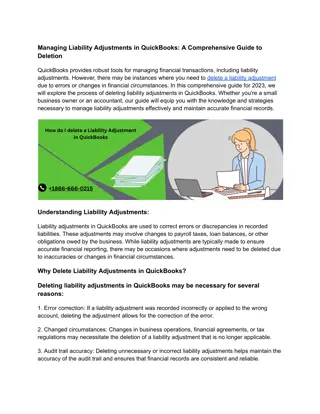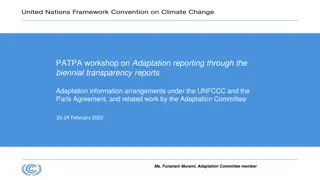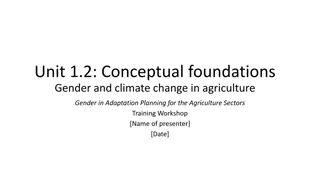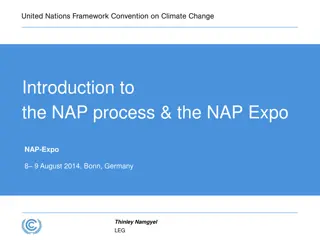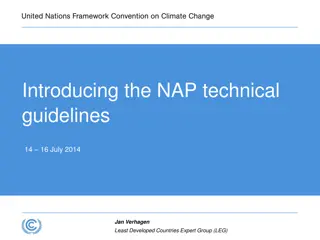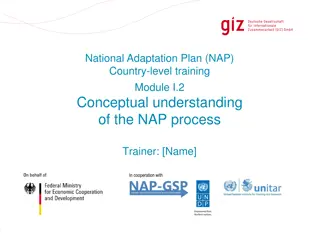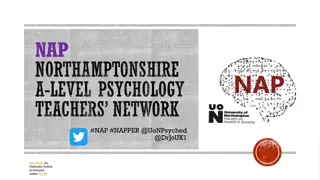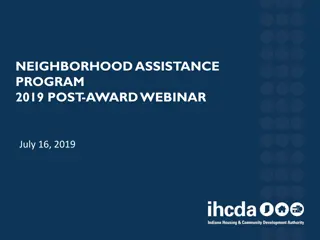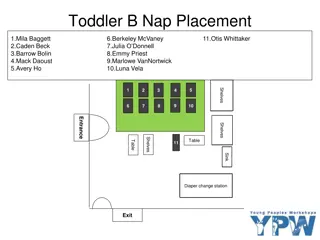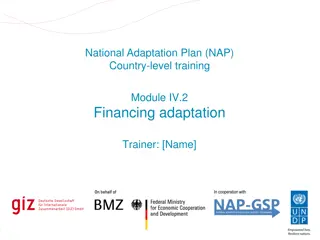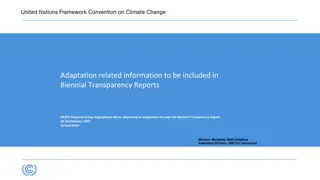Insights into National Adaptation Plan (NAP) Revision and Adjustment Process
Delve into the dynamic nature of NAP planning, emphasizing the necessity of regular revision and adaptation to evolving environmental, socio-economic, and political circumstances. Learn about adjusting goals, sectors, stakeholders, measures, and timeframes to align with changing conditions, illustrated with real-world examples.
Download Presentation

Please find below an Image/Link to download the presentation.
The content on the website is provided AS IS for your information and personal use only. It may not be sold, licensed, or shared on other websites without obtaining consent from the author.If you encounter any issues during the download, it is possible that the publisher has removed the file from their server.
You are allowed to download the files provided on this website for personal or commercial use, subject to the condition that they are used lawfully. All files are the property of their respective owners.
The content on the website is provided AS IS for your information and personal use only. It may not be sold, licensed, or shared on other websites without obtaining consent from the author.
E N D
Presentation Transcript
National Adaptation Plan (NAP) Country-level training Module V.2 NAP as a living document Trainer: [Name] In cooperation with Slide 1
Overview of this module Adaptation is a long-time process covering many decades Various changes will take place over such long time periods which will have to be reflected in the NAP process NAP documents have to be flexible and open for adjustments (NAP as living process) Slide 2
What can you expect to learn from this session? Understand the iterative character of NAP planning and implementation Get sensitized for the need for regular revision Reflect reasons and frequency of revision Slide 3
Need for regular adjustments NAP process has long-term character. Framework conditions such as CC impacts and vulnerabilities will evolve over time. Experiences from NAP implementation will gradually evolve. Knowledge and state of science will improve over time. Relevant development and sector plans will change to which the NAP process is aligned: Strong link to national planning cycles Mainstreaming is a continuous process. Slide 4
Time-scale of adaptation Planning horizons Slide 5 Source: Adapted from Staffort Smith 2009
Particular areas of change influencing NAP New directions in the national development planning New policy directions Socio-economic changes Increasing knowledge on CC change and vulnerability Experiences within the NAP implementation process (what works, what doesn t work) Feed-back from M&E system New impetus from international climate negotiations Slide 6
How can a NAP be adjusted ? Adjusted goals New sectors to be covered Adjusted measures New stakeholders to be involved New plans / policies to be aligned with Adjusted timeframes Changed resource conditions (funds, personnel ) Real case: New political situations might require comprehensive adjustments in the NAP process. The National Climate Change Strategy of Tunisia was not implemented after the Arab spring any more. A new process had to be started to win a mandate for adaptation. Slide 7
Initiatives and triggers for revision Revisions might be launched by adaptation steering bodies if new knowledge emerges or relevant framework conditions change. New development or sector plans might need reflection in the adaptation process (Example: A new River Basin Management Plan might be very relevant for climate sensitive irrigation projects). Some counties initiated their NAP process through an act of parliament, an executive order by the President or the like. This might include provisions for up-dating (Example: US Executive Order 13514 on Climate Change Adaptation). The time-frames for revision might be also stipulated in the Adaptation Plan itself. 17/08/2024 Slide 8
Exercise: Revision process for NAP Please reflect possible changes and options for adjustment in Matrix V.2.1 for the concrete situation of your country. Note down your finding on cards Present your findings in plenary Slide 9
Imprint Published by Deutsche Gesellschaft f r Internationale Zusammenarbeit (GIZ) GmbH This presentation is part of a NAP country-level training that has been developed by GIZ on behalf of BMZ and in cooperation with the NAP Global Support Programme (NAP-GSP), in particular UNDP and UNITAR. Climate Policy Support Project Dag-Hammarskj ld-Weg 1-5 65760 Eschborn, Germany T +49 61 96 79-0 F +49 61 96 79-1115 The training is designed to support countries in setting up a National Adaptation Plan (NAP) process. It builds on the NAP Technical Guidelines developed by the Least- Developed Countries Expert Group (LEG). Contact E climate@giz.de I www.giz.de/climate You are welcome to use the slides, as long as you do not alter its content or design (including the logos), nor this imprint. If you have any questions regarding the training, please contact Till Below or Nele B nner at GIZ. For questions related to the Technical Guidelines, please refer to the UNFCCC s NAP Support Portal. Responsible Nele B nner, GIZ Author Alfred Eberhardt Contributions by Nele B nner As a federally owned enterprise, the Deutsche Gesellschaft f r Internationale Zusammenarbeit (GIZ) GmbH supports the German Government in achieving its objectives in the field of international cooperation for sustainable development. GIZ also engages in human resource development, advanced training and dialogue. Slide 10
